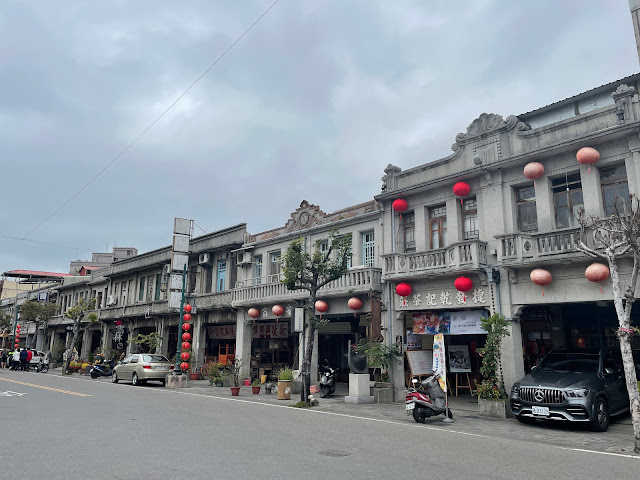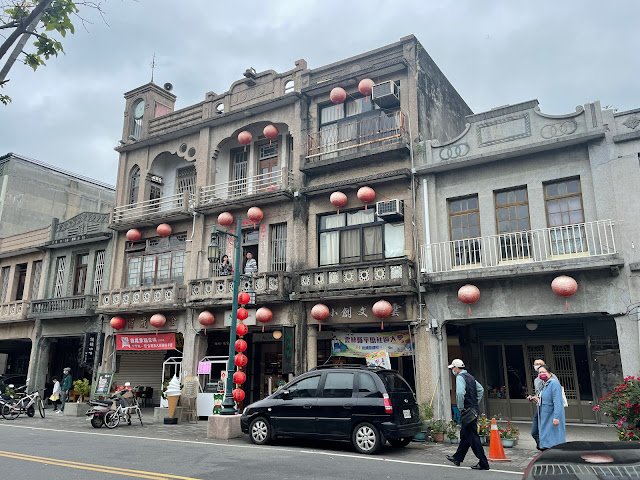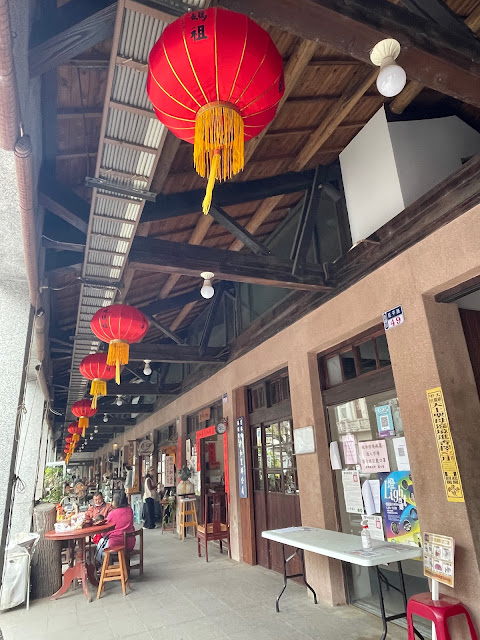Unlike on Monday (Lunar New Year's Eve), today the traffic on the highway was regulated by traffic lights. We had to wait for several minutes before joining the highway. Other than that, the traffic wasn't too bad before noon. However, the situation was different in the evening. The police were checking the number of people in each car before allowing them to enter the highway. During holidays, at least three people per car are required to enter. Additionally, the traffic in Tainan was very congested from Xiaying all the way to the city, so we decided not to drive on the highway there.
Today, we met more family members. We drove to Xiluo, where we had lunch with two aunts, uncles, and cousins. One of the aunts told us that there are plenty of decorations around Mazu Temple on Xiluo Old Street, so we left our son at their house for a while and went into town. It had been a long time since we visited the old street in Xiluo. It was quite crowded at that time. In the afternoon, we drove back to my parents-in-law's place, where another family came to visit.
Xiluo Old Street - Yanping Old Street (延平老街)
Xiluo Old Street, also known as Yanping Road, was an early Taiwanese market for the distribution and trading of rice, vegetables, and fruits. It was one of the important towns for water and land freight exchange. Xiluo Street was formed more than 170 years ago. Today, Yanping Road still constitutes part of the core area of Xiluo Market Street. The Yanping Historic District is covered by Datong Road, Zhongxing Road, Xiuwen Road, Zhongshan Road, and Renhe Street.
Most of the ancient Western-style buildings in Xiluo Old Street were constructed in the 1930s. During that time, the Japanese government encouraged the construction of single-room, narrow-faced, and wide-street houses, influencing Taiwanese craftsmen under Japanese rule. Yanping Road is considered a representative example of street house architecture from that period.
The buildings on Xiluo Yanping Old Street and Douliu Taiping Old Street belong to the same era. They are Baroque-style buildings introduced during the Japanese occupation. With a history of over 60 years, most of them are two- or three-story structures. The buildings mainly use mold printing, stone washing, and veneering bricks as construction materials. The most eye-catching feature of these buildings is the parapet wall with various shapes on the front.
See also: Douliu Taiping Old Street
Xiluo East Market (西螺東市場)
Xiluo East Market is a traditional market with a history that can be traced back to the Qing Dynasty. The market area was initially located near the ferry station in Zhuoshui River, and a market gradually formed in the back street area of the city. The market building was constructed in the 1950s using leftover wood from the construction of the Xiluo Bridge. The reinforced concrete section was completed in 1965. Due to the shift in the business district, the market gradually declined. The East Market faced demolition disputes but was eventually preserved through the "Revitalization of Stores in Xiluo Historic District and Reconstruction of Old Houses" initiated by the Luoyang Cultural and Educational Foundation. Restoration was completed in 2011, and the market was registered as a historic building in Yunlin County in 2010.
Xiluo Fuxing Palace (西螺福興宮)
Xiluo Fuxing Palace is dedicated to Mazu and has its origins in 1717. A monk named Minghai from Yongquan Temple in Fujian came to Taiwan to enshrine the statue of Mazu from Meizhou and built a temple in Xiluo. In 1770, the old temple was demolished, and a new temple was relocated to the main street with the agreement of Xiluo officials. In 1800, the temple underwent renovations and expanded to have two entrances. The renovation was completed in 1874.
Fuxing Palace serves as the first stop for Dajia Mazu to rest after entering Yunlin, and it is the only temple where Dajia Mazu will return to and depart from.




























0 komentarze:
Post a Comment